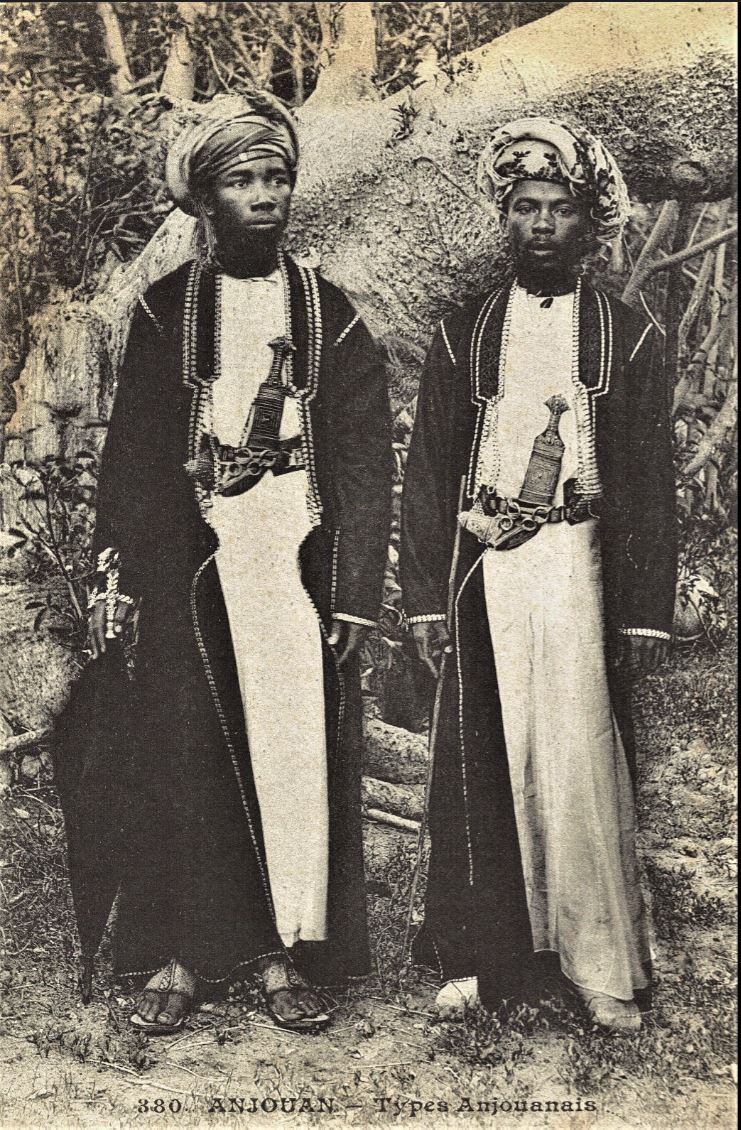|
CDV (Cart de Visite) by Trinquart Rue de port Mahon,Paris. She was the daughter of Sultan Ramanateka and princess Rovao, who originated from Madagascar.Size 6,5 by 10,5 cm. She reigned the island between 1849 and 1867. She died when she was 42. Her father swore alliance to Said bin Sultan of Zanzibar. On May 26 1849
All her live she was a pawn of local political groups that were pro-French or pro-British. As a child the French hoped to gain influence in Moheli by sending a French governess named madame Droit. However the French Oktober 1851, following a revolt, she changed her name to Djoumbe Fatima. In 1852 she agrees to marry a pro British cousin of Sultan Said bin Sultan of Zanzibar named M'Kadara., they got three children. One day M'kadara is on a mission in Zanzibar, but on his return the government of Moheli forbade him entry. Djoumbe asked the French for help, but because of the great local resistance the problem cannot be solved. Finally Djoumbe Fatima agrees to marry the pro-French prince of Anjouan, Said Omar. This marriage does not last very long and Djoumbe reunites with her years-long lover, the Frenchman Joseph Lambert (1824-1873) Lambert is a wealthy adventurer who did a lot of trade in the Indian ocean.
The Omani dress and jewellery must be linked to her relationship with Zanzibari Omani M'Kadara the cousin of sultan Said bin Sultan.

Antique photo Djoumbe Fatima photo taken before 1874

Antique postcard with two Anjouan men, Anjou is part of the Comorro islands,
The two men are wearing the cloths of Omani officials and the Omani Saidi Khanjar (dagger). A lot of people from the Comoros islands were living in Zanzibar during the 19th century. |